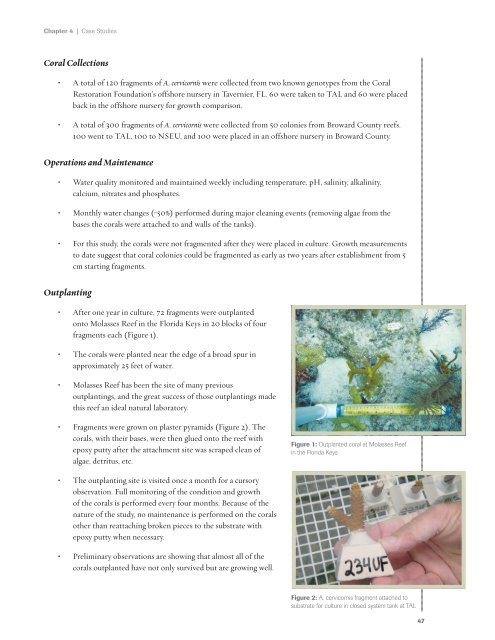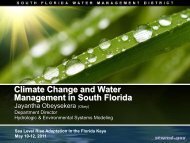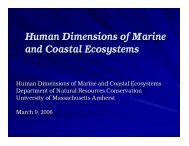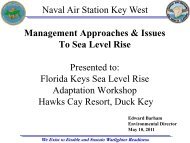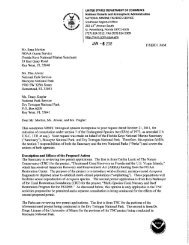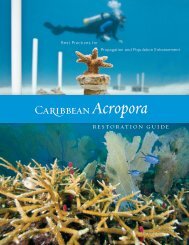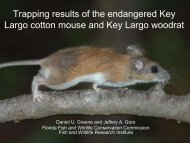Caribbean Acropora Restoration Guide - The Florida Reef ...
Caribbean Acropora Restoration Guide - The Florida Reef ...
Caribbean Acropora Restoration Guide - The Florida Reef ...
You also want an ePaper? Increase the reach of your titles
YUMPU automatically turns print PDFs into web optimized ePapers that Google loves.
Chapter 4 | Case Studies<br />
Coral Collections<br />
• A total of 120 fragments of A. cervicornis were collected from two known genotypes from the Coral<br />
<strong>Restoration</strong> Foundation’s offshore nursery in Tavernier, FL. 60 were taken to TAL and 60 were placed<br />
back in the offshore nursery for growth comparison.<br />
• A total of 300 fragments of A. cervicornis were collected from 50 colonies from Broward County reefs.<br />
100 went to TAL, 100 to NSEU, and 100 were placed in an offshore nursery in Broward County.<br />
Operations and Maintenance<br />
• Water quality monitored and maintained weekly including temperature, pH, salinity, alkalinity,<br />
calcium, nitrates and phosphates.<br />
• Monthly water changes (~50%) performed during major cleaning events (removing algae from the<br />
bases the corals were attached to and walls of the tanks).<br />
• For this study, the corals were not fragmented after they were placed in culture. Growth measurements<br />
to date suggest that coral colonies could be fragmented as early as two years after establishment from 5<br />
cm starting fragments.<br />
Outplanting<br />
• After one year in culture, 72 fragments were outplanted<br />
onto Molasses <strong>Reef</strong> in the <strong>Florida</strong> Keys in 20 blocks of four<br />
fragments each (Figure 1).<br />
• <strong>The</strong> corals were planted near the edge of a broad spur in<br />
approximately 25 feet of water.<br />
• Molasses <strong>Reef</strong> has been the site of many previous<br />
outplantings, and the great success of those outplantings made<br />
this reef an ideal natural laboratory.<br />
• Fragments were grown on plaster pyramids (Figure 2). <strong>The</strong><br />
corals, with their bases, were then glued onto the reef with<br />
epoxy putty after the attachment site was scraped clean of<br />
algae, detritus, etc.<br />
Figure 1: Outplanted coral at Molasses <strong>Reef</strong><br />
in the <strong>Florida</strong> Keys<br />
• <strong>The</strong> outplanting site is visited once a month for a cursory<br />
observation. Full monitoring of the condition and growth<br />
of the corals is performed every four months. Because of the<br />
nature of the study, no maintenance is performed on the corals<br />
other than reattaching broken pieces to the substrate with<br />
epoxy putty when necessary.<br />
• Preliminary observations are showing that almost all of the<br />
corals outplanted have not only survived but are growing well.<br />
Figure 2: A. cervicornis fragment attached to<br />
substrate for culture in closed system tank at TAL<br />
47


